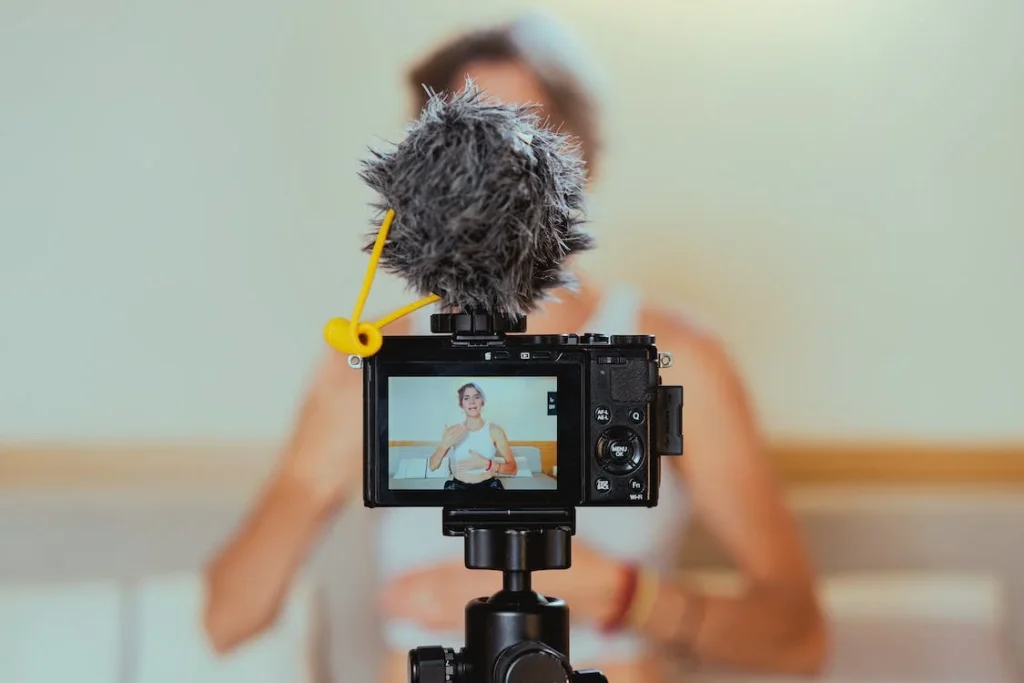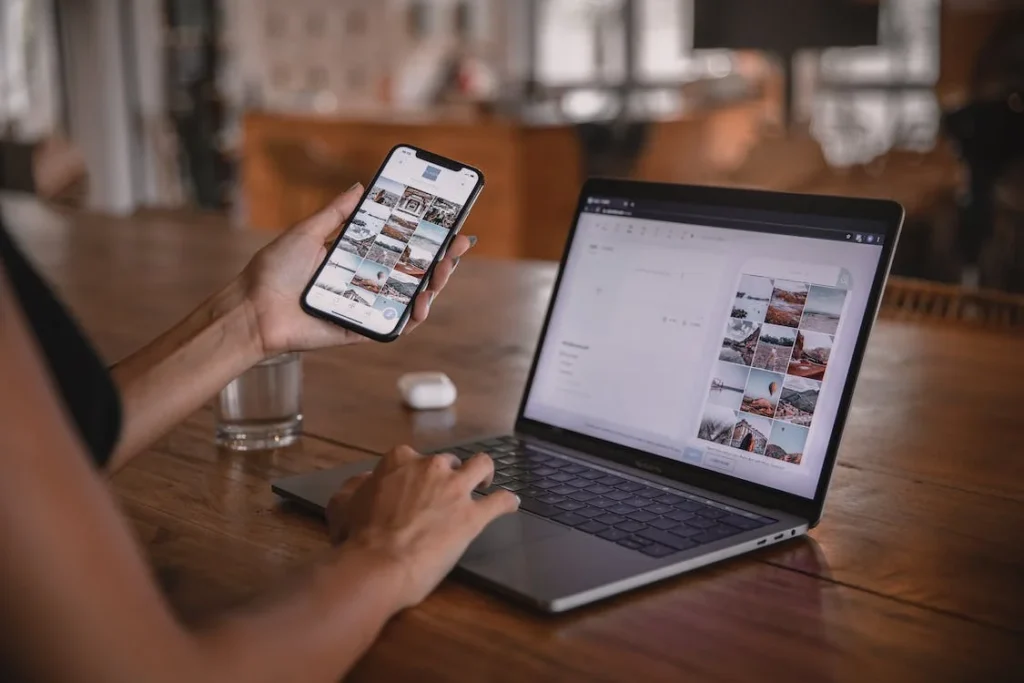This Article has been revised, edited and added to, by Poulomi Chakraborty.
- The Game Changer: Choosing the Right Influencer
- Finding the Perfect Match
- Authenticity Over Popularity
- Strategic Content Collaboration
- Monitoring and Tweaking the Strategy
- Understanding Influencer-Brand Fit
- Assessing Audience Engagement Quality
- Leveraging Niche Influencers for Targeted Reach
- Conducting a Background Check
- Starting Small and Scaling
- Continuous Collaboration and Feedback
- Deep Dive into Content Strategy and Engagement Outcomes
- Crafting a Content Calendar
- Leveraging Stories and Live Sessions
- Utilizing Analytics to Sharpen Our Approach
- The Outcome: Engagement and Conversion Metrics
- Building a Community
- Continued Collaboration
- Crafting a Compelling Narrative
- Optimizing Content for Different Platforms
- Interactive and Immersive Experiences
- Measuring and Adapting to Audience Response
- Continuous Content Evolution
- Strategic Timing for Content Release
- Integrating Influencer Insights into Product Development
- Creating Co-Branded Experiences
- Leveraging Influencer Talent Beyond Promotion
- Strategic Partnership and Sponsorship
- Advanced Metrics for Measuring Impact
- Cultivating a Brand Ambassador Network
- Expanding Influencer Marketing Tactics
- Integrating Influencer Marketing into Overall Brand Strategy
- The Future of Influencer Marketing in Our Brand Strategy
- Conclusion
When I first dipped my toes into influencer marketing, I had my fair share of skepticism. How much difference could it really make? Today, after seeing a monumental boost in my brand’s reach, I’m here to share my journey and the tactical strategies that turned my doubts into big wins. This is not just about paying for a shoutout; it’s about weaving your story into the fabric of social media through voices that resonate and engage. So, let’s dive into how I leveraged influencer marketing to transform my brand’s presence online.
The Game Changer: Choosing the Right Influencer
When I started considering influencer marketing, the options were overwhelming. From mega-influencers with millions of followers to micro-influencers whose reach might seem modest, choosing the right one could easily turn into a high-stake bet. The turning point for me was understanding that bigger isn’t always better.
Finding the Perfect Match
I realized early on that alignment between my brand’s values and the influencer’s audience was crucial. This wasn’t just about numbers but about engaging an audience that would genuinely be interested in what we offer.
I spent weeks researching potential influencers, analyzing their audience demographics, engagement rates, and the authenticity of their interactions. It was imperative that the influencer’s followers were not just numbers, but real people who trusted and valued their opinions.
Authenticity Over Popularity
One of the biggest lessons I learned was that authenticity trumps sheer popularity. I decided to partner with a mid-tier influencer, someone who had a loyal following in the niche that perfectly aligned with our products.
This influencer wasn’t just promoting anything and everything; her posts were curated, genuine, and always resonated with her audience. This authenticity was what I banked on to transmit my brand’s message effectively.
Strategic Content Collaboration
Collaborating on content rather than dictating it was my next strategic move. We worked together to create content that felt natural and engaging rather than salesy. This approach allowed the influencer to maintain their unique voice while incorporating our brand in a way that felt seamless to the audience.
We planned a mix of posts—some directly showcasing the products, others subtly weaving in stories or experiences where the products played a key role.
Monitoring and Tweaking the Strategy
The initial response was promising, but the real success was in the agility to adapt and tweak our strategy based on real-time feedback. We monitored which types of posts garnered more engagement and adjusted our content calendar accordingly.
This flexibility not only increased the campaign’s effectiveness but also strengthened our relationship with the influencer, as they felt more involved and respected in the process.
Understanding Influencer-Brand Fit
When evaluating potential influencers, it’s crucial to look beyond their follower count and delve into the compatibility of their brand persona with your company’s ethos. An influencer whose brand values echo your own can authentically engage their followers with your message.
Consider their content style, tone, and the interests of their audience. If your product is a high-end tech gadget, an influencer known for their tech-savvy content and sophisticated review style might be a perfect match, as opposed to someone with a more laid-back approach focusing on lifestyle content.
Assessing Audience Engagement Quality
The quality of engagement that an influencer garners from their audience is more telling than the sheer volume of followers. Analyze the nature of interactions on their posts. Are the comments generic or do they reflect a genuine interest and engagement?
High-quality interactions typically include specific questions about the product, positive feedback, and a conversational tone between the influencer and their followers. This level of engagement indicates a loyal and active audience, which is more likely to consider purchasing recommendations seriously.
Leveraging Niche Influencers for Targeted Reach
For startups, every marketing dollar counts, and focusing on niche influencers can often provide the best ROI. Niche influencers, while they may have fewer followers, often boast higher engagement rates and a more dedicated audience base.
These influencers are seen as trusted experts in their specific areas, making their endorsements highly credible. For example, a startup selling eco-friendly products would benefit from partnering with an influencer who specializes in sustainable living and has an audience that passionately cares about the environment.
Conducting a Background Check
Before finalizing a partnership, conducting a thorough background check is essential. This includes reviewing past collaborations, the performance of sponsored content, and any potential controversies that could affect your brand’s reputation.
This due diligence will help you avoid pitfalls and ensure that the influencer’s past behavior aligns with your brand’s public image and ethical standards.
Starting Small and Scaling
For startups, a pragmatic approach often involves starting small and scaling your influencer activities based on initial successes. Consider initiating a pilot project with your chosen influencer to test the waters.
This could be a limited-time campaign or a few posts to gauge the influencer’s impact on your brand’s visibility and sales. Based on the results and the ROI of these initial efforts, you can decide on a longer-term commitment or adjust your strategy to include more influencers.
Continuous Collaboration and Feedback
Once you’ve chosen an influencer, fostering an open line of communication is key to refining and optimizing the collaboration. Regular feedback sessions where both parties can discuss what is working and what isn’t will help in adjusting the strategy in real-time, enhancing the effectiveness of your campaigns.
This collaborative approach not only improves campaign outcomes but also strengthens the relationship between your brand and the influencer, potentially leading to more authentic and effective promotions.
By strategically selecting the right influencer and cultivating a relationship built on mutual respect and aligned goals, startup founders can leverage influencer marketing to significantly boost their brand’s reach and credibility in the market.
This process requires careful planning, keen insights into influencer and audience dynamics, and a flexible approach to evolving your strategy based on real-world feedback and results.
Deep Dive into Content Strategy and Engagement Outcomes
After establishing a solid partnership with the right influencer, the next phase was to dive deeper into the content strategy. This involved a blend of analytics and creativity to ensure the content not only attracted attention but also encouraged interaction and conversion.
Crafting a Content Calendar
Creating a structured content calendar was crucial. This helped us plan out posts, stories, and other engagements in advance, aligning them with key marketing dates, product launches, and relevant trends.
Each piece of content was strategically designed to tell a part of our brand story, making the influencer’s feed a narrative journey that their followers could get invested in.
Leveraging Stories and Live Sessions
We expanded beyond traditional posts to include Instagram Stories and live sessions. These formats offered a more direct and personal way for the influencer to connect with their audience, bringing our brand along for the ride.
Live sessions, in particular, were a hit. They allowed real-time interaction, where followers could ask questions about the products, see them in use, and get instant responses, which greatly boosted trust and interest.
Utilizing Analytics to Sharpen Our Approach
As our campaign progressed, we heavily relied on analytics to guide our decisions. We tracked engagement rates, click-throughs, and conversion metrics religiously. This data helped us understand what content worked best and at what times followers were most active. By continuously refining our approach based on these insights, we were able to maximize the impact of each post.
The Outcome: Engagement and Conversion Metrics
The results were more impressive than I had anticipated:
- Engagement Rate: Our overall engagement rate tripled, with particular spikes during live sessions and immediately following story posts.
- Follower Growth: The influencer’s followers became our followers, with a 40% increase in organic follower growth on our brand’s profile during the campaign.
- Conversion Rate: Most importantly, the conversion rate from influencer posts exceeded all other social media initiatives by over 50%. This was a clear indicator that the influencer’s followers were not just engaging with the content but were also interested in purchasing our products.
Building a Community
Perhaps the most valuable outcome was the community that built up around our brand through these influencer collaborations. Followers began to see our brand as part of their social media “family”, engaging not just with promotional content but also with our regular posts and updates. This sense of community has been crucial in maintaining long-term engagement on our social media platforms.
Continued Collaboration
The success of our initial campaign led to ongoing collaborations with the same influencer, each time exploring new creative directions and product highlights. This long-term partnership has helped keep our brand relevant and top of mind among the influencer’s growing audience.
This deep dive into a thoughtful content strategy and leveraging various social media tools and analytics not only boosted our brand’s reach but also converted engagement into tangible sales and lasting brand loyalty.
Crafting a Compelling Narrative
The heart of any influencer marketing strategy lies in the story you choose to tell. A compelling narrative that resonates with both the influencer’s audience and aligns with your brand can significantly enhance engagement.
It is essential to work collaboratively with influencers to craft stories that seamlessly integrate your products or services into their everyday content, making the promotion feel natural and less forced.
This could involve a series of posts that tell a progressive story or a thematic campaign that spans several weeks, offering depth and ongoing engagement rather than a one-off mention.
Optimizing Content for Different Platforms
Understanding the nuances of different social media platforms is critical. What works on Instagram might not be as effective on Twitter or Facebook. Tailor your content to fit the platform’s strengths; for example, visually rich posts for Instagram, short and witty updates for Twitter, and detailed story-driven posts for Facebook.
Additionally, ensure that all content created is mobile-friendly, as most social media browsing occurs on mobile devices. This platform-specific approach not only increases content’s appeal but also its potential to go viral.
Interactive and Immersive Experiences
To further engage an audience, consider incorporating interactive elements into your content strategy. This could be through contests, polls, or interactive Q&A sessions where the influencer invites their followers to participate actively.
These interactive elements not only boost engagement but also provide valuable insights into the preferences and behaviors of your target audience. Additionally, creating immersive experiences such as virtual or augmented reality integrations can significantly enhance how audiences interact with your brand, offering memorable encounters that translate into higher engagement rates.
Measuring and Adapting to Audience Response
Monitoring how audiences respond to various content types is crucial. Utilize analytics tools to track engagement metrics like views, likes, comments, and shares to understand what type of content resonates most.
But don’t stop there; delve into the qualitative aspects of engagement by analyzing the sentiment and tone of comments and interactions. This will give deeper insights into the audience’s perception of your brand and help you refine your messaging.
Continuous Content Evolution
The digital landscape is continually evolving, and so should your content strategy. Stay abreast of the latest trends and adapt your strategy to include emerging content forms and technologies.
For instance, if short-form video content becomes more popular, as seen with TikTok, consider incorporating more of these elements into your strategy. Regular updates and refreshes to your content approach will keep your brand relevant and engaging over time.
Strategic Timing for Content Release
Timing your content releases can dramatically affect engagement levels. Analyze data to determine when your target audience is most active online and schedule posts to coincide with these peak times.
Furthermore, consider the timing of your content releases in the broader context of current events, industry developments, and even competitor activities to maximize impact.
By taking a strategic and data-driven approach to content creation and engagement, startup founders can effectively leverage influencer marketing to not only reach a wider audience but also to engage them in a meaningful way that drives conversions.
Integrating Influencer Insights into Product Development
Leveraging influencer insights for product development is a strategic move that can give your startup a competitive edge. Influencers are often trendsetters with a deep understanding of consumer preferences within their niche.
By involving them in the product development process, not only can you gain valuable feedback on product concepts and design, but you can also create products that are more likely to resonate with target markets.
This approach can transform influencers into true partners whose invested interest in the product’s success can lead to more authentic and compelling promotions.
Creating Co-Branded Experiences
A step beyond simple product endorsements is the creation of co-branded experiences. This could involve exclusive events, webinars, or virtual meet-ups hosted in collaboration with influencers.
Such experiences not only enhance brand visibility but also deepen consumer engagement by providing unique value that goes beyond the product itself. These events can be leveraged to generate buzz around your brand, create memorable interactions, and build stronger community ties.
Leveraging Influencer Talent Beyond Promotion
Influencers can be utilized not just for their audience reach but also for their content creation skills. Many influencers are skilled photographers, videographers, and writers.
Hiring influencers as content creators for your broader marketing initiatives can ensure high-quality, engaging content that is stylistically consistent and resonates well with your target audience.
This content can be used across your marketing channels, providing a cost-effective solution to content creation that carries the added credibility of the influencer’s touch.
Strategic Partnership and Sponsorship
Engaging with influencers in a sponsorship role at industry events or in corporate social responsibility activities can significantly boost brand credibility and visibility. These partnerships can extend beyond the digital world and influence public perception in the broader community.
Sponsorships tied to charitable causes or community improvement projects also showcase your brand’s values and commitment to social responsibility, aligning with the values of both influencers and their followers.
Advanced Metrics for Measuring Impact
As your influencer marketing tactics grow in complexity, it becomes essential to develop more advanced metrics for measuring their impact. Beyond basic engagement metrics, consider analyzing brand sentiment, purchase intent, and the lifetime value of customers acquired through influencer channels.
Utilizing sophisticated analytics tools can help quantify the effectiveness of each influencer partnership and strategy, allowing for data-driven adjustments and more strategic resource allocation.
Cultivating a Brand Ambassador Network
Developing a network of brand ambassadors from among your influencers can provide ongoing benefits. Ambassadors who continually engage with and promote your brand over longer periods can lend credibility and create sustained narrative threads that reinforce brand messages.
This long-term relationship building not only helps in maintaining consistent brand presence but also in creating loyalists both in terms of consumers and influencers themselves.
By strategically expanding your influencer marketing tactics, you can not only increase the scope of your reach but also deepen the impact of each interaction. These advanced strategies provide opportunities to innovate in how you connect with potential customers and how you leverage influencer relationships, turning occasional collaborations into powerful partnerships that propel your brand forward.

Related: Check out our free SEO suite

Expanding Influencer Marketing Tactics
After seeing significant success from our initial influencer marketing efforts, we started exploring additional tactics to enhance our reach and effectiveness even further. Here’s how we expanded our strategy to include a broader spectrum of influencer collaborations and creative approaches.
Multi-Influencer Campaigns
To amplify our reach, we began to engage with multiple influencers at once. This multi-influencer strategy involved both similar and diverse profiles to cover a wider audience spectrum. For example, we collaborated with influencers in the fitness space while simultaneously working with lifestyle and wellness influencers. This allowed us to cross-promote our products in different contexts, catering to varied interests and lifestyles.
Coordinated Launches
A key component of our multi-influencer campaigns was coordinated launches. We synchronized product announcements and content releases across different influencer platforms. This created a buzz as followers from different spheres saw the product simultaneously, enhancing the perception of widespread acceptance and popularity.
Themed Campaigns
We also experimented with themed campaigns where all content from various influencers revolved around a specific theme related to our brand values or product features. Themes such as “Summer of Health” or “Winter Wellness Warriors” gave influencers a creative framework to craft their content, making the overall message more cohesive and powerful.
Seasonal and Event-Based Targeting
Aligning our campaigns with seasonal events and holidays proved highly effective. For instance, leveraging fitness influencers during the New Year resolution period or wellness influencers during Mental Health Awareness Month significantly boosted relevance and engagement.
Engaging Through Challenges and Giveaways
To make our campaigns more interactive, we incorporated challenges and giveaways. Influencers encouraged their followers to participate in branded challenges, which often involved using our product in a creative way and tagging us. This not only increased engagement but also generated user-generated content that we could share on our own channels.
Giveaways as a Growth Tool
Giveaways were particularly useful for growing our social media presence. By requiring participants to follow our brand, like the post, and tag friends, we rapidly expanded our reach and follower base. These activities were always aligned with the influencer’s style and audience preferences to ensure authenticity.
Advanced Analytics and AI Tools
To further refine our strategy, we invested in advanced analytics and AI tools to track the success of our campaigns and predict trends. These tools provided deeper insights into follower behaviors, content preferences, and potential areas for improvement.
Predictive Engagement Metrics
By using AI to analyze past engagement data, we were able to predict which types of posts and influencer profiles would yield the best results. This predictive capability allowed us to be more strategic in our influencer selection and content planning, thereby optimizing our investments.
Long-Term Ambassadorships
Transitioning successful influencer relationships into long-term ambassadorships was a key strategy for maintaining consistency and trust. Ambassadors who continually represent the brand help solidify our presence in the market and maintain an ongoing connection with the audience.
Outcome of Expanded Tactics
These expanded tactics led to a broader reach, higher engagement, and more robust conversion rates. Our approach of diversifying influencer partnerships and engaging with audiences through interactive and thematic content not only increased brand visibility but also strengthened customer loyalty and trust in our brand.
Expanding our influencer marketing tactics has been a journey of innovation and learning, proving that the right strategy can turn influencers into valuable brand assets.
Integrating Influencer Marketing into Overall Brand Strategy
As influencer marketing proved to be highly effective for our brand, we started integrating it more deeply into our overall brand strategy. This meant aligning influencer activities with our broader marketing goals and ensuring they complemented other marketing efforts.
Holistic Marketing Integration
Coordinated Marketing Channels
We began to coordinate influencer marketing with other marketing channels such as email, social media, paid ads, and content marketing. For instance, when an influencer launched a product on their platform, we supported the launch with targeted ads, dedicated email blasts, and social media posts on our channels. This multi-channel approach ensured that we maximized visibility and reinforced the message across all customer touchpoints.
Unified Brand Messaging
It was crucial that all content, regardless of the channel, communicated a consistent brand message. We worked closely with influencers to ensure that their content not only highlighted our products but also echoed our core brand values and messages. This alignment helped strengthen our brand identity and ensured a cohesive perception across diverse audiences.
Strategic Product Development
Feedback Loops
Influencer and consumer feedback gathered through our influencer campaigns became a valuable resource for product development. We used insights from influencer interactions to understand customer preferences and pain points, which guided our product innovation and improvements. This feedback loop not only helped us create products that met market needs but also demonstrated to customers that we valued their input, fostering a deeper brand loyalty.
Limited Edition Collaborations
We also explored co-creating limited edition products with influencers. These collaborations were based on the influencer’s unique understanding of their audience’s preferences, which helped us tap into niche markets with highly targeted products. Such initiatives were usually accompanied by exclusive marketing campaigns, creating a buzz and generating a sense of urgency among consumers.
Strengthening Brand Loyalty
Community Building
A significant part of integrating influencer marketing into our brand strategy involved building and nurturing an online community. Influencers helped foster this community by engaging with their followers on topics related to our brand, encouraging discussions, and facilitating a space where followers felt connected not just to the influencer, but to our brand as well.
Repeat Engagement
We encouraged influencers to regularly update their followers on their experiences with our brand over time, rather than limiting their content to one-off posts. This repeat engagement helped maintain interest and kept our brand relevant in the daily lives of consumers.
Measuring Impact on Brand Strategy
Comprehensive Analytics
To measure the impact of integrating influencer marketing into our overall brand strategy, we developed comprehensive analytics that tracked everything from campaign reach and engagement to direct sales and long-term brand loyalty indicators. This data was crucial for understanding the ROI of our influencer marketing efforts and for making informed decisions about future marketing strategies.
Brand Sentiment Analysis
We also employed sentiment analysis tools to gauge brand perception across various platforms. This helped us understand how influencer campaigns affected public sentiment towards our brand and identify areas where we could improve our messaging.
The Future of Influencer Marketing in Our Brand Strategy
As we look ahead, the role of influencer marketing in our brand strategy is poised to evolve further, embracing new technologies and trends while deepening the integration with our overall marketing efforts. Here are key areas we anticipate will shape the future of our influencer marketing initiatives:
Embracing Emerging Platforms and Formats
Diversifying Platforms
While Instagram and YouTube have been the mainstays of our influencer marketing efforts, we’re exploring emerging social media platforms like TikTok, and Snapchat, as well as niche platforms that cater to specific interests and demographics. This diversification will allow us to reach different audience segments more effectively and leverage platform-specific features for unique content experiences.
Leveraging Video and Interactive Content
Video content continues to dominate social media engagement. We plan to invest more in video formats, including short-form videos on TikTok and Instagram Reels, which have shown high engagement rates. Additionally, live streaming will play a bigger role, providing real-time interaction between influencers and their audiences. Interactive content such as polls, Q&A sessions, and augmented reality (AR) experiences will also be utilized to enhance engagement.
Advanced Personalization and AI Integration
AI-Driven Campaigns
We aim to incorporate AI technologies to better match influencers with our brand based on data-driven insights into their audience demographics and engagement patterns. AI can also help customize content for different audience segments, increasing relevance and effectiveness.
Personalization at Scale
Using machine learning, we can analyze data from previous campaigns to predict which types of content will perform best with specific segments of our audience. This level of personalization will allow us to craft campaigns that resonate more deeply with individual consumers, enhancing the impact of our influencer partnerships.
Sustainability and Ethical Marketing
Promoting Sustainability
As consumers become more conscious of the environmental and social impact of their purchases, we will prioritize working with influencers who advocate for sustainability. This alignment will not only enhance our brand’s reputation but also resonate with a growing segment of consumers who prefer to support brands with strong ethical values.
Transparent Partnerships
Transparency in influencer marketing will become even more critical. We will ensure that all influencer partnerships and promotions are clearly disclosed, maintaining trust with our audience. This approach will also extend to being upfront about the results of our campaigns, fostering a transparent dialogue with both our consumers and our marketing partners.
Long-Term Relationships and Brand Ambassadors
Fostering Long-Term Collaborations
Instead of one-off campaigns, we will focus on building long-term relationships with influencers who truly resonate with our brand. These deeper collaborations can evolve into brand ambassador roles, where influencers are seen as genuine advocates for our brand, enhancing trust and loyalty among their followers.
Community-Centric Approaches
We will encourage our influencers to not only promote products but also to build and nurture their own communities around shared values and interests related to our brand. This community-focused strategy will help in creating a more engaged and loyal audience.
Conclusion
As we continue to adapt and innovate within the realm of influencer marketing, our brand is set to not only keep pace with the evolving digital landscape but also to set trends. By embracing new platforms and content formats, integrating advanced personalization through AI, and upholding strong ethical standards, we’re gearing up for a future where our influencer partnerships are more impactful and intimately tied to our overall brand strategy. This strategic depth will enable us to connect with diverse audience segments on a deeper level, forging long-term relationships that transcend typical marketing interactions.
By focusing on genuine collaborations that align with core brand values and investing in community-building, our approach to influencer marketing will continue to enhance our brand’s visibility, loyalty, and trust among consumers. This holistic and adaptive strategy not only aims to meet the immediate needs of our market but also to anticipate future trends, ensuring our brand remains at the forefront of the digital marketing revolution.
Read Next





















